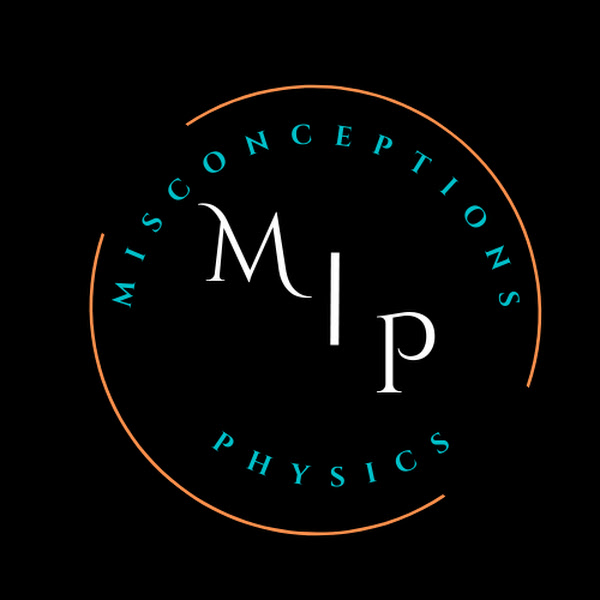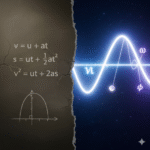
The SUVAT Shortcut is a Dead End: Why You Need the Energy Highway!
When Your Favorite “Shortcut” Fails In physics, you learn a powerful set of “shortcut” formulas: the SUVAT equations. They are your trusted tools for problems with constant acceleration—like a ball in freefall or a car speeding up steadily. They’re clean, simple, and effective. But what happens when the situation gets more complex? What if the force, and therefore the acceleration, is constantly changing? This is where many students hit a frustrating dead end. Suddenly, the SUVAT shortcut leads nowhere. This is the story of why we sometimes need to ignore the messy, moment-by-moment details of a journey and instead take a bigger, more powerful route: the Energy Highway. The Problem: When Forces Aren’t Friendly The single biggest limitation of the SUVAT equations is that they demand constant acceleration. This means the net force on the object must also be constant. But in the real world, many forces are variable. In our last post, we explored the unique rhythm of Simple Harmonic Motion (SHM) and saw why SUVAT equations fail for it. The reason? A variable restoring force from the spring (F=−kx). SHM is a perfect, specific example of the challenge we’re tackling today. But it’s just one type of variable force. This post offers a powerful solution—The Energy Highway—that works for a whole general class of these problems. While our SHM analysis focused on describing the path and phase of the motion over time, the energy method allows us to solve for speeds and positions without needing to track every moment of the journey. Consider this classic problem that highlights the issue: A compressed spring is used to launch an object along a horizontal frictionless surface. When the spring is no longer compressed, what determines the speed of the object? As the spring expands, its force on the object gets weaker and weaker. Since F=ma, if the force is changing, the acceleration is also changing. You can’t just pick one value for ‘a’ and plug it into a SUVAT equation. So, how do we solve it? We need a different way of thinking. Watch this video to solve one such problem related to spring forces The Historical Journey: From Constant Force to a Deeper Truth Our understanding of motion was built over centuries, piece by piece. But even Newton knew the universe was more complicated. The force from a spring isn’t constant. The gravitational force between planets changes with distance. Trying to use SUVAT for these problems is like trying to use a ruler to measure the coastline—it’s the wrong tool for a complex job. Physicists needed a new perspective. The Breakthrough: The Unseen Constant Instead of getting bogged down by changing forces, scientists started asking a different question: In a system, is there anything that doesn’t change? The answer was energy. This wasn’t a single “Eureka!” moment, but a gradual dawning of a profound truth during the Industrial Revolution, a time filled with steam engines, heat, and machines. James[1] Prescott Joule’s Paddlewheel Experiment (1840): Joule was a meticulous experimentalist (and a brewer!). He was obsessed with the idea that energy wasn’t “lost” but simply changed form. In his most famous experiment, he used a falling weight to turn a paddlewheel inside an insulated barrel of water. He proved that the mechanical work done by the falling weight was directly converted into a specific amount of heat, which he measured with a tiny temperature increase in the water. 💧 He established the “mechanical equivalent of heat,” providing concrete, experimental proof that mechanical energy could transform into thermal energy in a predictable way. Helmholtz [2] Grand Theory (1840, Germany ) While Joule was proving the concept in his lab, Helmholtz, a physician and physicist, was crafting the grand theory. He started from a simple, powerful idea: a perpetual motion machine is impossible. From this single philosophical premise, he argued that a universal quantity—what we now call energy—must be conserved in all interactions of nature. In 1847, he published his work, mathematically unifying mechanics, heat, electricity, magnetism, and chemistry under the single umbrella of the Law of Conservation of Energy. Together, Joule’s tangible proof and Helmholtz’s unifying theory cemented one of the most fundamental principles of the universe. This was the revolutionary breakthrough that opened up the Energy Highway. Now, physicists could bypass the messy details of variable forces and simply track the flow of this conserved quantity. Let’s go back to our spring problem. Video Example: A horizontal spring of spring constant k and negligible mass is compressed through a distance y. What is the final speed of the mass? The SUVAT “dead end” forces you to think about the changing acceleration. The Energy Highway lets you bypass that completely: Energy at the Start = Energy at the End Initially, all the energy is stored in the compressed spring as Elastic Potential Energy (Ep). At the end, after the mass is launched, all that energy has been converted into the Kinetic Energy (Ek) of the moving mass. A similar problem has been worked in this example, watch this video until the end to understand the method of cracking such problems Look at that! A problem that was impossible with SUVAT becomes a simple algebraic equation. This powerful approach works for a huge range of problems you’ll see, from masses hanging on springs to blocks being launched, as shown in our video solutions. A Final Thought: Your Role as the Knower In TOK, we learn that a model is a simplified representation of reality, powerful within its specific scope, but limited outside of it. The SUVAT equations are a fantastic model for the AOK of Natural Sciences, but only for the limited scope of constant acceleration. Recognizing this limitation isn’t a failure. It’s a crucial step in your development as a knower. It prompts you to ask a powerful knowledge question: How does the scientific community decide when a model is no longer adequate? The shift from a purely force-based analysis to an energy-based one is a classic example of a…






